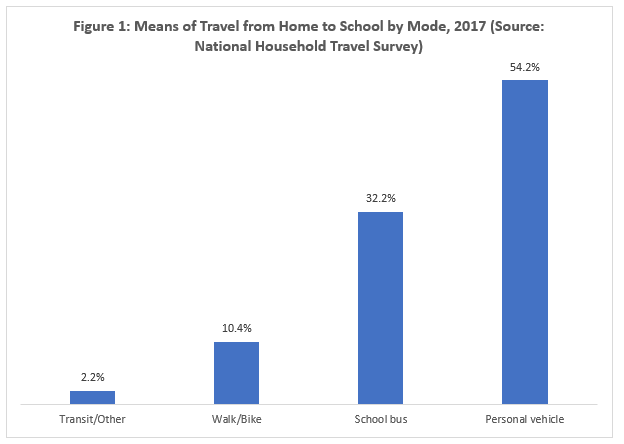 Editor’s note: This commentary from reimaginED executive editor Matt Ladner is the first in a series of posts that will examine how arcane rules and regulations are hindering forward progress for K-12 education – and what needs to be done to break through them.
Editor’s note: This commentary from reimaginED executive editor Matt Ladner is the first in a series of posts that will examine how arcane rules and regulations are hindering forward progress for K-12 education – and what needs to be done to break through them.
Recently, trucking executive Ryan Peterson had a Twitter thread that just might have saved the American economy from shortages and hyper-inflation.
A great deal of America’s current supply chain problem can be traced to a nonsensical rule that forbade stacking more than two empty containers on top of each other in the ports of Los Angeles and Long Beach. Some folks apparently thought that more than two was unsightly, and incredibly, this led to a cascade of failures that caused cargo ships to idle off the port of California.
Petersen wrote a detailed thread explaining how this happened and what needed to be done about it, including but not limited to stacking shipping containers higher than two. He basically called for a “flood the zone” with solutions to break the bottleneck.
Petersen’s thread went viral, and the stacking change was made, giving the country a fighting chance to avoid having swimmers trying to board stranded cargo ships to do their Christmas shopping.
There are similar bottlenecks in K-12 education – things that if they ever did make sense, stopped making sense long ago. This post will kick off a series about such rules, asking questions such as:
What would Ryan Peterson do about the student transportation crisis?
I recently wrote a white paper on student transportation for the Arizona Charter School Association. The more I looked into this subject, the more interesting it became.
Arizona has been expanding choice since 1994, and the state’s leaders have begun to confront long neglected equity issues. As a demonstration, the paper takes the address of the Arizona Capitol building in downtown Phoenix as an anchor point and examines options available to a middle school student.
The district bus system primarily serves the zoned district school. If a family can transport the child 3 miles round trip daily, they can choose between five public schools. If they can travel 6 miles daily, they can choose between 19 public schools, including multiple schools with very high academic and community ratings on the Greatschools and Niche websites.
A family lacking a car or with a work schedule that precludes student transport might find those other 18 schools tantalizingly out of reach. Meanwhile, the school with the easiest access by bus is one of the lower performing schools as rated by community members and as well as according to academic rankings of both websites.
A majority of Phoenix area students are attending something other than their zoned district school. Open enrollment transfers outnumber charter school students, and charter school students outnumber private school students, who outnumber homeschool students.
All Arizona families pay a separate property tax to support the district yellow bus system, but ridership on that system was in decline even before the COVID-19 pandemic. In 2019, data from the Arizona Auditor General indicated that just over 23% of Arizona public school students were transported to school by district bus.
What about, ahem, the other 77%?
School bus drivers are required to have a Commercial Drivers License (CDL). In the years leading to the pandemic, the competition for CDL holders grew steadily from firms like Amazon and Instacart. These firms offered full-time work and benefits, and they wanted more and more CDL holders.
This made it increasingly difficult for districts trying to hire part time workers with odd hours and no benefits.

COVID-19 not only shut schools; it sent the demand for delivery drivers through the roof. In-person learning eventually came back, but many of the drivers did not.
Making matters worse, many older drivers had not been interested in working full time but were also not interested in getting into an enclosed space with dozens of unvaccinated kids. This fall the American yellow bus system experienced a systemic collapse not radically different from the Port of Los Angeles.
Arizona districts, like other districts around the country, struggled during the fall of 2021. One media report featured Litchfield Elementary School District’s bus fleet parked idle for want of personnel. According to Nathan Whyte, the district’s director of transportation:
“Out of the 75 staff needed to run a smooth transportation operation, the district is missing 18 drivers and eight aides. We have been using all sorts of means to try and recruit. We’ve used social media, we’ve used word of mouth, we’ve used the newspapers, we are doing everything possible to draw in new members of staff, but it’s not working.”
Amphitheater Public Schools boosted its starting pay and also changed its school start times to make do with fewer drivers, describing the situation as a “crisis.”
What is to be done? In Ryan Peterson-type fashion, we need to flood the zone with solutions to attack the bottlenecks.
Bellwether Education found that in 2017, 54% of students reached school in a private vehicle and only 32% in a bus. It will be interesting to see just how far that bus percentage has dropped when and if we get figures for 2021, but let’s just dare to predict that it won’t be pretty.
The CDL is the two-container stack rule here: We need to figure out every way possible to get kids to school that doesn’t involve a CDL license holder. Amazon is not going away.
In a country where 54% (+ now) of students get to school in a private vehicle, every empty seat in a private vehicle needs to be viewed as an opportunity. Carpooling should not just be encouraged; it should be subsidized if we want to get kids to schools and take vehicles off the road.
Municipal bus systems have often operated in a separate silo from school transport. This needs to end as soon as possible. Minneapolis piloted a program to give municipal bus passes to high school students; truancy dropped, and grade point averages improved. When surveyed, the students reported that the increased flexibility of a system with more than one opportunity to reach their destination was helpful.
Innovative private firms have created software to facilitate carpooling and ride-share firms specialized in student transportation. Intergovernmental agreements and non-profits could play productive roles. Arizona Gov. Doug Ducey championed a Transportation Modernization Grant program to create competition among schools, cities and non-profits to find innovative solutions during the 2021 session.
A process of generating bottom-up solutions will be needed to see our way through this, and these challenges are hardly limited to Arizona. We still need the yellow bus system, but the yellow bus system alone has steadily become an 8-track player in a music streaming world.
As our system moves away from ZIP code herding students into schools, we will require a more varied, flexible and equitable system of transport. Stay tuned to this channel for updates on transport modernization, and other K-12 bottlenecks to break.


